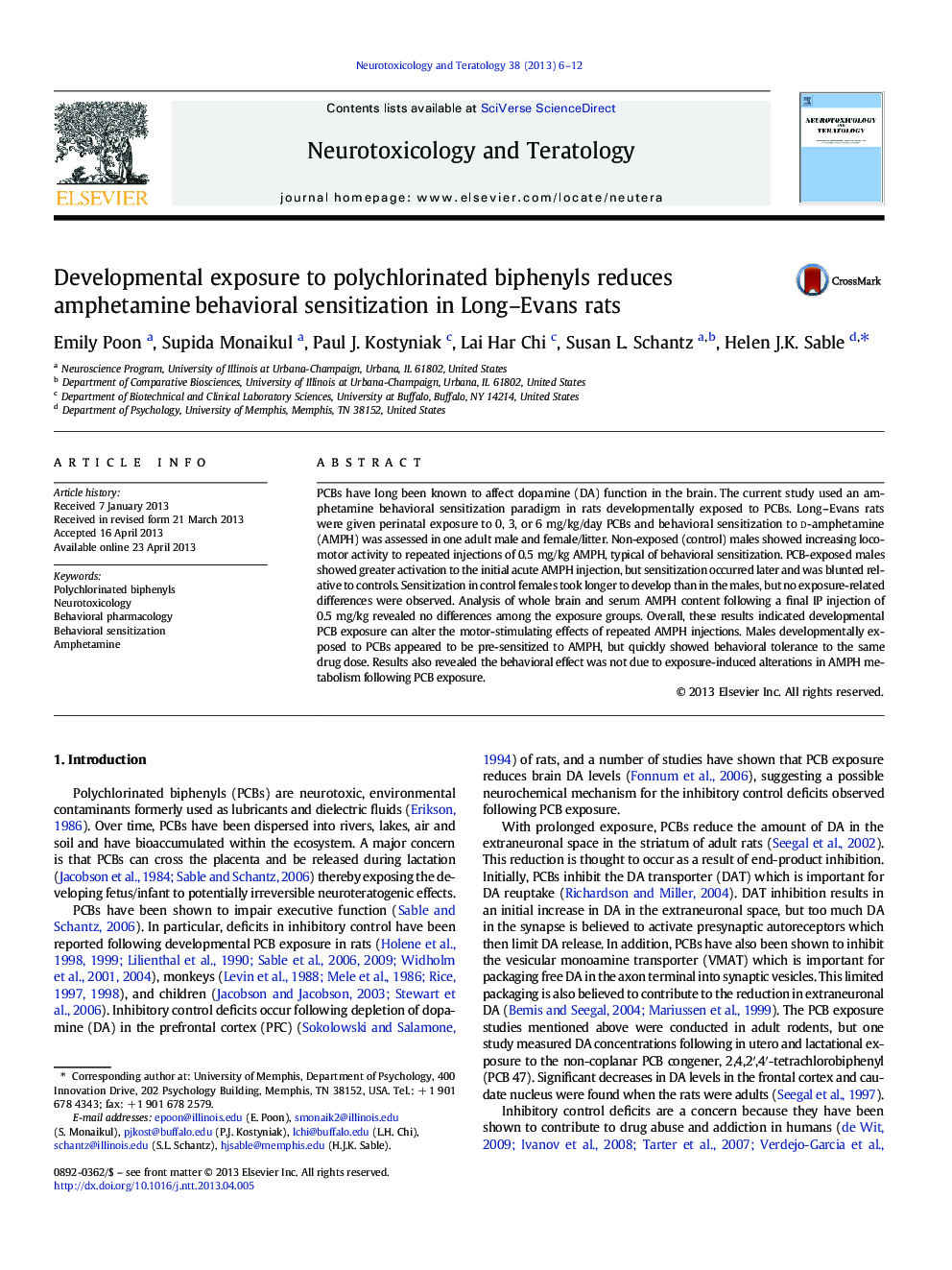| Article ID | Journal | Published Year | Pages | File Type |
|---|---|---|---|---|
| 2591297 | Neurotoxicology and Teratology | 2013 | 7 Pages |
•Long–Evans rats were perinatally exposed to 0, 3, or 6 mg/kg/day PCBs.•One male and female/litter were tested for behavioral sensitization to 0.5 mg/kg amphetamine.•PCB-exposed males inhibited greater locomotor activation to the first injection of amphetamine.•Amphetamine behavioral sensitization was attenuated in PCB-exposed males.•No exposure-induced alterations in AMPH metabolism following PCB exposure were found.
PCBs have long been known to affect dopamine (DA) function in the brain. The current study used an amphetamine behavioral sensitization paradigm in rats developmentally exposed to PCBs. Long–Evans rats were given perinatal exposure to 0, 3, or 6 mg/kg/day PCBs and behavioral sensitization to d-amphetamine (AMPH) was assessed in one adult male and female/litter. Non-exposed (control) males showed increasing locomotor activity to repeated injections of 0.5 mg/kg AMPH, typical of behavioral sensitization. PCB-exposed males showed greater activation to the initial acute AMPH injection, but sensitization occurred later and was blunted relative to controls. Sensitization in control females took longer to develop than in the males, but no exposure-related differences were observed. Analysis of whole brain and serum AMPH content following a final IP injection of 0.5 mg/kg revealed no differences among the exposure groups. Overall, these results indicated developmental PCB exposure can alter the motor-stimulating effects of repeated AMPH injections. Males developmentally exposed to PCBs appeared to be pre-sensitized to AMPH, but quickly showed behavioral tolerance to the same drug dose. Results also revealed the behavioral effect was not due to exposure-induced alterations in AMPH metabolism following PCB exposure.
